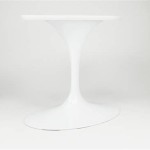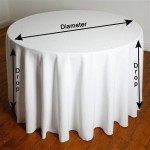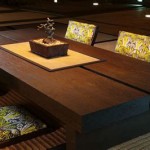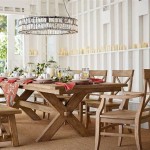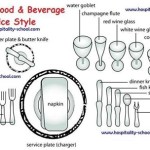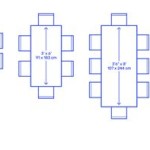Standard Size for a Pool Table: A Comprehensive Guide
The dimensions of a pool table are not arbitrary; they are carefully considered to provide an optimal playing experience and adhere to standardized rules. The standard size of a pool table is a critical factor impacting gameplay, the skill level required, and the overall enjoyment of the game. Understanding these dimensions is crucial for both casual players looking to buy a table for their home and serious competitors seeking to improve their skills on regulation equipment.
This article delves into the specifics of standard pool table sizes, examining the factors that influence these dimensions, providing details on the different sizes available, and offering insights into how to choose the right size for your specific needs and spatial constraints. Navigating the world of pool table dimensions can be complex, so a clear understanding of the terminology and common practices is essential.
Understanding Regulation Sizes and their Impact
Professional pool tournaments predominantly utilize two standard sizes: 9-foot tables and 8-foot tables. These dimensions are strictly regulated by governing bodies to ensure fair play and consistent standards across different competitions. The primary distinction between these sizes lies in the playing surface area, influencing the difficulty and strategic aspects of the game.
A 9-foot pool table, often referred to as a tournament-size table, boasts an actual playing surface measuring 50 inches wide by 100 inches long. This larger area allows for more complex shot-making and requires a higher level of precision. The increased distance between balls demands better cue ball control, making it a preferred choice for professional players. Due to its size, a 9-foot table necessitates a significant amount of space for comfortable play.
An 8-foot pool table, whose playing surface typically measures 44 inches wide by 88 inches long, offers a slightly more forgiving playing experience. While still challenging, the reduced distance between balls allows for more accessibility for players of varying skill levels. Eight-foot tables are commonly found in bars, pool halls, and residential settings due to their more manageable size requirements.
The dimensions of the playing surface directly influence the angles required for certain shots. Players must adjust their aiming strategies and cue ball control based on the table size. The larger the table, the more pronounced the effects of spin and distance become, demanding greater accuracy and more sophisticated positional play. This difference in playing dynamics is why serious players often practice on 9-foot tables, even if they frequently play on 8-foot tables in casual settings.
Furthermore, the size of the table influences the pocket size. Standardized pocket sizes are typically smaller on 9-foot tables, enhancing the difficulty. This encourages sharper shooting skills and penalizes near misses. These regulations ensure a level playing field and emphasize the importance of precision in professional pool.
Variations in Pool Table Sizes and their Suitability
While 9-foot and 8-foot tables are the most common standard sizes, smaller tables are also available. These smaller tables, often referred to as 7-foot or even 6-foot tables, are primarily designed for recreational use in environments where space is limited. Their reduced size significantly alters the gameplay, making them less suitable for serious practice but ideal for casual entertainment.
A 7-foot table, with a playing surface around 38 inches wide by 76 inches long, is a popular choice for home game rooms or apartments. The smaller size makes it easier for beginners to learn the game, and the required space is significantly less than that of an 8-foot or 9-foot table. However, experienced players may find the gameplay on a 7-foot table less challenging due to the shorter distances and less demanding shot-making requirements.
Six-foot tables, and even smaller novelty tables, are generally considered recreational items rather than standard pool tables. These tables may not adhere to regulation dimensions or pocket sizes, and are generally manufactured with lower quality materials. While they can be entertaining for children or in highly space-constrained areas, they are not suitable for serious play or skill development.
It is important to note that the overall dimensions of a pool table extend beyond the playing surface. Allowance must be made for the rails, bumpers, and outer frame. As a result, a table marketed as an "8-foot" table will typically have external dimensions exceeding 8 feet in length.
When considering different sizes, the weight of the table is also a crucial factor. Standard-sized pool tables typically have slate beds, which contribute significantly to their weight. The slate ensures a flat and stable playing surface, which is essential for accurate ball roll. However, the weight of the slate requires a sturdy floor and professional installation. Smaller tables may utilize composite materials for the playing surface, which reduces the weight but also compromises the playing quality.
Space Requirements and Considerations for Choosing the Right Size
Beyond the actual dimensions of the pool table, it is essential to consider the space required for comfortable play. This includes allowing adequate room for players to move around the table and execute shots without obstruction. Insufficient space can significantly hinder the playing experience and potentially lead to damage to the table or surrounding areas.
A general rule of thumb is to allow at least 5 feet of clearance around all sides of the table. This means that for a 9-foot table with external dimensions of approximately 5 feet by 10 feet, a room size of at least 15 feet by 20 feet is recommended. For an 8-foot table, which typically has external dimensions of around 4.5 feet by 9 feet, a room size of at least 14.5 feet by 19 feet is necessary. These measurements provide sufficient space for players to use standard-length pool cues comfortably.
The length of the pool cue is also a critical consideration. Standard pool cues are typically 58 inches long. In tight spaces, shorter cues, such as 48-inch or even 36-inch cues, can be utilized. However, using shorter cues can affect shot accuracy and control, particularly for experienced players who are accustomed to using standard-length cues.
Before purchasing a pool table, it is essential to accurately measure the available space and account for any potential obstructions, such as walls, furniture, or support columns. It may be helpful to use masking tape to outline the dimensions of the table and the necessary clearance around it to visualize how it will fit in the room. This will help prevent the disappointment of purchasing a table that is too large for the available space.
Another important consideration is the flooring. Pool tables are heavy, and a sturdy, level floor is essential for proper installation and play. In some cases, it may be necessary to reinforce the floor to support the weight of the table. Uneven floors can affect ball roll and make it difficult to level the table properly.
Finally, consider the lighting. Adequate lighting is crucial for accurate aiming and shot-making. Overhead lighting fixtures should be positioned to provide even illumination across the entire playing surface, minimizing shadows and glare. Dimmable lights allow adjustment of brightness to suit different playing conditions and preferences.

The Official Size Of A Pool Table Canadian Home Leisure

What Is The Standard Size Of A Pool Table Measurement Guide Room

Pool Table Room Size Guide Chart Birkbeck Billiards

Pool Table Room Size Guide Chart Birkbeck Billiards

Supreme Pool Table Room Size Information

Correct Pool Table Dimensions To Leave Enough Room For Playing Billiard

Standard Pool Table Size Contemporary Home Office Furniture Check More At Http Www Nikkitsfun Com Standar Dimensions Sizes

How To Choose The Right Size Pool Table Hamilton Billiards Snooker Blog

Room Size Pooltables Com

How Tall Is A Standard Pool Table Height Guide Bar 101


